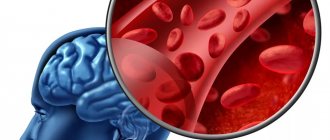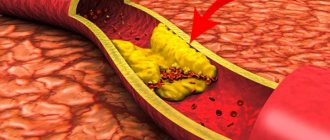New thoughts and hopes for those suffering
Review and facts, what is schizophrenia?
Do you find it difficult to separate reality from fantasy? Do you hear voices? Do you believe that someone is reading your thoughts and controlling them? Are your thoughts “switched off” and do you find it difficult to express how you feel and why you act and think the way you do? If so, then you may be sick. All of the above signs are a consequence of brain depletion and behavioral disorder with chronic and acute first signs that increase continuously or periodically return in acute episodes throughout life.
Heavily stigmatized in our culture, it is often confused with multiple personality disorder and sufferers are suspected of posing a serious danger to others. Yes, people diagnosed with schizophrenia exhibit strange behavior and may appear agitated, withdrawn, or unresponsive, which creates additional fear in the general public. Most of them do not understand that if someone suffers from this condition, there is a regulated treatment: medications and psychological help, and this significantly improves the lives of those who experience this condition. And it is very important to get timely help if you are suffering from a disease, because, contrary to public opinion, patients pose the greatest danger to themselves, not to others. Schizophrenia carries a high risk of suicide, with 10 to 13% of people diagnosed making a successful suicide attempt within the first decade of diagnosis. The overall prevalence of this disorder affects up to 1% of people, and what makes this disease so frightening and monumental is the severity of its symptoms.
Although it can occur at any age, the most typical onset of the disease usually occurs:
- in men: between late teens and early 20s
- in women from 20 to 30 years old.
It is very rare for people under the age of 12 and over 40 to be diagnosed. Life expectancy is reduced by approximately 10-25 years compared to average, although this is likely due to an increase in the number of physical early signs and much higher suicide rates than in the general population.
Aggression
The male form of the disease is twice as often accompanied by aggression than the female form. The disorder is distinguished by 2 types of aggressive behavior:
- auto-aggression;
- aggression directed towards others.
Auto-aggression, manifested by suicide attempts, accompanies the stage of schizophrenia, characterized by the patient’s awareness of the ongoing pathological process. The individual realizes the loss of his former beautiful, successful life, the loss of prospects for professional growth, the breakdown of personal relationships, the departure of friends. Depressive thoughts give rise to aggressive behavior directed inwards.
Hostility directed at others, on the contrary, becomes a sign of a schizophrenic’s loss of self-criticism.
A woman tells the story of her marriage life. When she began to live legally married to her husband, initially he was quite attentive, courteous and tactful. One day, after drinking a little, my husband’s behavior suddenly changed: he became aggressive, shouted, and even tried to hit me. Then similar episodes of aggression were repeated several times.
One day a man was shaving in the bathroom and accidentally cut himself. A woman passing by noticed and offered to help. Suddenly the husband became enraged and began to rage. He began to chase his wife around the house, shouting: “Here, witch, drink my blood!” He was soon diagnosed with schizophrenia.
Aggression directed outward by a schizophrenic individual is usually carried out unconsciously, provoked by delusional ideas and hallucinations.
The first signs of schizophrenia
Features are often categorized into positive, negative, and cognitive deficits. If you suffer from schizophrenia and are undergoing treatment, you may have noticed that medications are quite good at reducing positive symptoms. Negative signs are more persistent and do not respond to drug intervention as easily as positive signs. Deficits in cognitive abilities are the first serious indicator of the impact of the disease on an individual’s quality of life. If you suffer from multiple cognitive deficits, your functioning in society as an adult will be minimized, your behavior will deteriorate, and sustainable recovery will be more difficult to achieve.
Symptoms of a simple (mild) form of schizophrenia
Identifying signs of a simple (mild) form of schizophrenia takes quite a long time. As a rule, a diagnosis requires outpatient observation by a psychiatrist over a period of at least one year. The following symptoms of a simple (mild) form of schizophrenia should persist throughout the year:
- loss of interest in life;
- social autism;
- impoverishment of speech;
- inactivity;
- depletion of facial expressions.
At the same time, such a person should not experience hallucinations, delusional ideas of any kind, or abnormal subjective experiences. There should be no history of dementia or other mental disorders caused by organic matter.
Positive signs include:
- Delusions are false beliefs that remain stable even when the patient is presented with facts that contradict these beliefs.
- Hallucinations (tactile, auditory, olfactory and gustatory). The first signs are voices. Visual hallucinations are extremely rare in schizophrenia
- Thought disorders (dysfunctional thinking)
- Movement disorders (excited body movements, or, conversely, stupor)
How does low-grade schizophrenia manifest?
Sluggish schizophrenia is called schizotypal disorder, thereby distinguishing it from other types of schizophrenia. This is not entirely natural: schizophrenia remains schizophrenia no matter how quickly it develops.
In sluggish schizophrenia, the symptoms are usually similar to manifestations of neurosis: “obsessions” appear, a tendency to perform various rituals (already existing or invented by the patient himself). She is very characterized by excessive “philosophizing” and abstract reflections that have no value.
This disease is diagnosed quite rarely. This is not surprising: ritualism or “obsessiveness” is rarely associated with such serious mental disorders.
Cause of schizophrenia
Researchers have not yet determined the exact cause, but common genetic and environmental factors are leading causes of unusual behavior. It's no secret that the disease is hereditary. Research has shown that while schizophrenia affects less than 1% of the general population, if you have a first-degree relative with the disease, your chances of developing it increase to 10%. In twins, this risk is significantly increased, with an undiagnosed identical twin having a 50% chance of developing it. But this does not mean that if your mother is sick, then you will automatically suffer. Although genes increase the risk of disease, they only lay the foundation. For the development of the full picture, it seems that the “right” combination of environmental factors and genetic predisposition is necessary.
Research has shown that some of the most significant environmental factors that contribute to the inclusion of hereditary factors are problems during childbirth, intrauterine fetal starvation, exposure to certain viruses and psychosocial factors.
Brain composition is also considered the first leading feature. Imbalances between neurotransmitters, particularly problems with dopamine, appear to be responsible for the higher incidence of schizophrenia in the general population. Likewise, disruption of brain development during the gestational phase of development can lead to the first imbalanced connections between brain chemistry and brain structure (especially white matter), in addition to the first hormonal changes/imbalances that occur during puberty.
There is some evidence that substance abuse may also predispose to the development of the disease. Use of mind-altering drugs during adolescence and early adulthood may increase the risk of developing behavioral changes, including marijuana use.
What's next
Gradually, the sick male brain begins to draw its own picture of the world, to interpret what is happening in its own way.
The sufferer creates a new reality based on new sensations. Everything seems unreal to him; the feeling of altered consciousness, as if hypnotized, does not leave him. There is a hidden meaning, encrypted messages in everything. Walking down the street, a person witnesses a fight, and he becomes convinced that this performance was staged especially for him and carries hidden information. As the pathological process develops, the gradation of symptoms into positive and negative becomes more noticeable.
Negative symptoms of male schizophrenia include:
- isolation;
- avoidance of communication;
- emotionlessness;
- lack of will;
- apathy;
- neglect of personal hygiene.
Human behavior is changing more and more. Autistic traits are on the rise. A characteristic sign is loss of eye-to-eye contact.
Behavior is characterized by ambivalence, that is, duality: I want - I don’t want, I do - I don’t. A typical example. A schizophrenic comes to see a doctor. He extends his hand to say hello and abruptly pulls him away. Then he stretches it out again, withdraws it again, as if hesitating.
Problems in the cognitive sphere are growing sharply. Representatives of the stronger sex become absent-minded. Lost concentration. Perception and memory are impaired. Thinking is disorganized and illogical. As a result, the speech turns out to be difficult to understand, full of new words invented by the patient. Inferences are drawn incorrectly. A schizophrenic person thinks according to his own schemes, incomprehensible to others, which is why he seems absurd and insane to others.
It is worth noting that the basis of pathological thinking is not so much a violation of intelligence as a different perception of reality. A different picture of reality in the inner world of the male self, caused by changes in the psyche.
A number of psychiatrists believe: the later the disorder debuts, the more intact the intellect remains. Such individuals turn into real geniuses of science and art. They make incredible discoveries and become engines of progress. Scientists believe: such schizophrenics are simply a treasure for society and provide invaluable benefits. The mental abilities of schizophrenic geniuses are much higher than those of healthy non-geniuses.
There is a complete modification of one's own self. Sometimes people with schizophrenia themselves talk about themselves in the third person. The male personality is split into two. It’s as if two opposite people coexist in it: one does, the other criticizes. Gradually, there is a complete disintegration of the personality, in which it is already difficult to see the former one.
Unusual sensations in the body constantly accompany the patient. Complaints of headaches similar to migraines or brain tumors are typical. Headaches have a non-standard interpretation.
A man with schizophrenia claimed that his brain was increasing in size, swelling, filling all the space in the skull, pressing on the bones. The pressure is so great that your head is about to explode. The brain is so swollen that it hangs over the eyes, presses on the brow ridges, the eyelids - they protrude outward, the eyes will soon fly out of their sockets.
This syndrome even received a separate name: brain swelling.
Color perception also changes in schizophrenic disorder. Men are more likely to have a weakened reaction to color factors. Preference is given to a calm, muted palette, in contrast to women who prefer bright colors.
The color choice often depends on the form of the disease and the prevailing symptoms. For example, with the paranoid form, men gravitate toward blue and yellow colors. For depression, gray tones are chosen. The colors red and black have a stimulating effect on schizophrenics.
Complications of schizophrenia
As mentioned, suicide rates are abnormally higher in people with schizophrenia than in people with other mental disorders. Thus, various estimates suggest that between 20% and 40% of people diagnosed will attempt suicide at some point in their lives. It is likely that up to 13% will successfully complete this act, with the majority of them being men. Suicide is a serious complication of schizophrenia because many people with the disorder don't even know they have it and, if they feel like killing themselves, don't know they can get help.
Substance abuse is another common behavioral complication. Nicotine addiction is the most common substance abuse disorder among schizophrenics, with patients suffering from nicotine addiction three times more often than the general population. If you have schizophrenia, you have an increased tendency to abuse more difficult substances, including marijuana, alcohol and cocaine. Of course, drugs have a devastating effect on a person’s overall health, but the simultaneous use of drugs and medications for schizophrenia makes them (the medications) less effective and potentially dangerous. In addition, amphetamines (stimulants) significantly worsen behavior and severity of symptoms.
Delusional disorders
Signs of paranoid schizophrenia in men often manifest themselves in paranoid form with delusions and hallucinations. A typical topic is delusional ideas:
- impact;
- persecution;
- relationships;
- jealousy;
- invention;
- greatness.
Under their influence, the schizophrenic's behavior inevitably changes.
The Bavarian king Ludwig suffered from paranoid schizophrenia with delusions of grandeur and persecution. The titled patient ordered the construction of a lead castle, equipping the roof of the building with a lake. Guided by delusional fantasies, the monarch swam across the lake on an artificial swan. He imagined himself as Lohengrin, a knight from the legend of King Arthur, who sailed in a boat led by swans to find and save a beautiful girl.
Seized by delirium of persecution, Ludwig sat alone in the castle for weeks, fearing for his personal safety. If the Bavarian king visited the theater, he was the only spectator. His box was closed too tightly, so the artists often doubted the presence of the king. It gave the impression of acting without an audience.
Despite the progressive illness, the king continued to rule for a long time. Ludwig died by committing suicide, “taking” with him his own psychiatrist Gudden.
Manifestations of paranoid syndrome significantly increase the risk of aggressive behavior of representatives of the stronger sex suffering from schizophrenia. The effect is enhanced by imperative hallucinations that issue orders to the individual. Often patients harm loved ones, guided by voices, confused by the deceptive beliefs of delusions of jealousy. Insistent voices order to punish the promiscuous wife who is cheating on her husband, painting colorful pictures of betrayal to the deceived jealous man. The latter, driven by delusional pressure, decides to commit a crime.
Diagnosis and tests for schizophrenia
Diagnosis is based on the presence of the first symptoms and their duration. Generally speaking, the presence of two or more psychotic features (eg, delusions, hallucinations, disorganized speech, catatonic behavior) must be significantly severe and have been present for at least one month. In more severe cases, the presence of significant hallucinations and delusions may be enough to make a diagnosis of schizophrenia.
Before making an initial diagnosis, the physician must rule out any other possible causes of inappropriate behavior, including medical interventions, other mental illnesses, and brain tumors.
Symptoms of paranoid (paranoid) schizophrenia
In addition to the general symptoms, the symptoms of paranoid (paranoid) schizophrenia (some are listed above; or see F20.0–F20.3 according to ICD-10) include delusions of a special nature:
- persecution;
- jealousy;
- meanings and relationships;
- bodily transformation;
- special mission;
- high origin.
“Voices” also refer to signs of paranoid (paranoid) schizophrenia. They can be commanding or threatening; Deceptions of taste, smell and bodily sensations may be present.
Treatment and care for patients with schizophrenia
There are several treatment methods and therapies aimed at eliminating the symptoms. If you suffer from this condition, you can take antipsychotics and undergo psychosocial techniques. Antipsychotics are the most common form of treatment for people with schizophrenia. They significantly reduce positive symptoms by affecting the neurotransmitter systems of the brain.
The second level of treatment includes cognitive and behavioral therapy to “retrain” the brain after antipsychotics reduce positive symptoms. In addition, cognitive behavioral therapy improves self-care skills and teaches mechanisms for coping with emotions and behavior, so that schizophrenics can lead almost normal lives - going to work, college and maintaining close relationships.
Coordinated specialty care includes a full course of treatment, including medication, psychosocial therapy, family involvement, and employment services to help the person complete their plans and return to normal life. The SSP project is aimed at changing the usual course of illness of people suffering from schizophrenia, and orienting them towards a productive, independent life.
Pharmacology and psychotherapy in the treatment of schizophrenic disorders
The first choice drugs are antipsychotics. These drugs have an antihalucinatory and sedative effect, are able to stop delusional and obsessive states, and return the patient to relative clarity of thinking. All antipsychotic drugs prescribed to a schizophrenic are taken in strict doses and exclusively under the supervision of the attending physician. For example, "Aminazine".
The drug is selected strictly according to the needs of each patient, the dose and duration of the course are adjusted during the recovery process. At the same time, psychotropic drugs of other groups are prescribed that affect the behavior, emotional stability and mood of a schizophrenic. We need corrective agents that reduce the level of anxiety, normalize sleep and help the patient return to the real world.
Psychiatrists work with schizophrenics, since this disease requires an extremely extensive knowledge base. You cannot trust the health of the sick person to psychologists, otherwise the situation will worsen and the personality will degrade irreversibly. The course of psychotherapy is indicated to take place in an inpatient psychiatric clinic.
The doctor’s task is not only to prevent the progression of the disease, but also to teach a man to independently recognize its phases and signs of exacerbation. Abstract-associative methods of work, hypnotic practices and deep psychoanalysis are strictly prohibited when working with such patients.
The patient must be able to critically assess his condition, distinguishing hallucinations from reality, correlate his actions with the emotional state of the people around him, and adequately express his desires.
Group cognitive behavioral or art therapy is best suited for these purposes. A psychiatrist can help with issues of social adaptation using occupational therapy methods.
Therapy should be comprehensive, including both medication and courses of psychiatric care. This is the only way to influence the processes occurring in the “sick” brain.
Psychiatric practice knows many examples when it was possible to achieve stable and long-term remission. If the disease is ignored, then personality changes will lead to chronic depression and, as a result, to possible suicide.
For more information about what schizophrenia is, watch the video:
This article has been verified by a current qualified physician, Victoria Druzhikina, and can be considered a reliable source of information for site users.
Rate how helpful this article was
4.8 4 people voted, average rating 4.8
Did you like the article? Save it to your wall so you don’t lose it!
Living and managing life with schizophrenia
This requires a significant number of caring, involved people. Family involvement, peer support, and the care and support of a loved one is no small feat for all of these people. How do you react when someone claims they are being hunted by aliens? Or that the government has installed spyware in their home and transmits orders directly to their brain? When caring for a loved one suffering from behavior change, it is helpful to keep in mind that this is a biological disease. Express your concern and motivate them to see a doctor. Once they receive treatment, encourage them to stick with it. Do not ridicule their delusions, do not minimize their impact on your loved one, and do not attach importance to any hallucinations that they may have. In the end, for a person suffering from schizophrenia, all this is quite real.
Why do men get sick more often?
Statistics have given a verdict: the stronger sex suffers from schizophrenic disorder more often than the weaker. The fact of primacy is associated with various factors: high hopes are placed on the stronger sex, more claims are made against it, and many expectations are associated with it.
A man in the eyes of society is a protector, a provider, a support. If the stronger sex is the head of the family, the responsibility for providing for the family falls on his shoulders. The modern world poses the financial question quite harshly. To earn money, a representative of the strong half of humanity has to work hard. Physical and mental stress is classified as chronic stress, which is an important factor in provoking the disease.
Fun fact: bachelors are 4 times more likely to suffer from the disorder than married people.
Another reason for the prevalence of the disease among the male population of the planet is considered to be physical injuries, in particular to the head. Its representatives are fond of traumatic sports: boxing, karate. Women drive cars more intensively, becoming involved in accidents. They serve in the army and take part in hostilities. Banal yard fights are more common among boys. All this becomes an excellent breeding ground for brain damage. And then - depending on your luck.
Among men, alcohol abuse is more common; drugs poison the brain, causing severe intoxication.
Patients are able to put forward their theories and ways to resolve the disease.
A schizophrenic man claims: one of the provoking factors of the disease is pride. From childhood, the guy was proud, and also a braggart. He did not recognize God, and when he began to come to the atheist in visions and call him to himself, he fell into magic. He imagined himself to be the messiah, the savior of humanity. After treatment there was relief. I started going to church and reading the Bible.
An interesting theory about genius personalities. In literature you can often find the statement of the legendary psychiatrist Cesare Lombroso: genius and madness go hand in hand. Or the words of the great Aristotle that genius inevitably presupposes madness. And indeed: among the male population there are much more hidden geniuses than among the female population, which explains the higher frequency of male schizophrenia.
Support and Resources
If you suffer from schizophrenia, continue treatment and find and join a support group. Find out about opportunities to participate in clinical trials for new treatments. Do not suddenly stop taking your medications, do not skip doses, or change the dosage of your medications on your own. Keep in mind that while there is no magic pill for this disorder, there are thousands of people experiencing the same condition. You are not alone. And schizophrenia is treatable, especially if diagnosed at an early stage. You can still enjoy life while living with schizophrenia.
Author: Editorial staff of the Help-Point.net portal
Start working with a psychologist right now
Start a consultation
Tags: mental illness symptoms of schizophrenia treatment of schizophrenia help with schizophrenia causes of schizophrenia
Share
Comments
- Comments
Loading comments...
Previous article
Development of schizophrenia
Next article
Dependency problem
In the male form of the disorder, issues of alcohol, drug addiction and smoking are particularly acute. There is an inverse relationship between the disease and addiction. Many scientists call the male form of the disorder a provocateur for the development of drug addiction and alcoholism, since such substances help relieve tension. Conversely, addictive behavior can provoke disease, since addictions lead to destructive processes in the brain.
Harmful substances change the behavior of a schizophrenic, intensify the symptoms of the disease, aggravate anxiety, and incite aggressiveness.
Considering the type of alcoholic schizophrenia, the following types of pathological behavior are distinguished:
- Delusional psychosis provokes the appearance of anxiety, excitement, and develops a feeling of wild fear. The patient is uncontrollable. Runs, screams. Aggressive. Characterized by delusions of persecution and jealousy;
- hallucinosis causes the schizophrenic's brain to produce voices. The individual complains about their intrusiveness. Voices make you harm others. Normal perception of reality is preserved;
- delirium tremens – triggered by prolonged alcohol abuse. Causes depersonalization. Disorients a man. Creates ominous hallucinations. The patient is agitated and his behavior is inappropriate.
Sometimes, under the influence of alcohol, a schizophrenic changes dramatically. The patient craves communication and friendliness. The behavior of an individual affected by addiction is devoid of signs of illness. However, such well-being is imaginary. It provokes an exacerbation of the painful process. There is an intensification of aggressive, autistic manifestations of the disease. Delusional symptoms are significantly pronounced.
Signs of drug intoxication are similar to attacks of schizophrenia. Often the patient is mistaken for a drug addict. Drugs significantly aggravate the manifestations of the disease. Psychotics tend to change the course of treatment, reducing the effectiveness of the drugs. Schizophrenic drug addicts also often ignore pharmacological treatment regimens.
The combination of symptoms of schizophrenia with narcotic substances is especially dangerous. Such an alliance gives rise to expressed hatred, increases anger, and provokes the individual to commit murder and cause severe bodily harm.
Dmitry, 36 years old. He has been drinking alcohol regularly since the age of 18. The guy's father also abused alcohol. At the age of 20, he went to prison for theft committed “out of solidarity with his comrades.” Having freed himself, he got married. A child was born. Soon Dmitry was overcome by insomnia. He claimed to communicate mentally with friends and was being persecuted by bandits. After this episode, the psychiatric hospital opened its doors to the guy for the first time.
The patient smokes a lot and suffers from a hacking cough. He has a permissive attitude towards health. He is in a dejected state. Depressed by feelings of loneliness. According to the guy, he drinks with colleagues to get rid of feelings of melancholy and anxiety. His wife and child left him and Dmitry really misses them.
Treatment of senile paranoia
Antipsychotics (neuroleptics) are used for therapy. These drugs often cause adverse reactions, so they are started with a minimum dose. If necessary, it is gradually increased to a therapeutically effective level and subsequently adjusted depending on the mental state of the patient. Doctors at our clinic prescribe modern atypical antipsychotics, which are well tolerated and have a long-lasting effect.
If there are contraindications to taking antipsychotics, antidepressants are used. The duration of drug treatment for senile paranoia is 6 months or more. In most cases, therapy is carried out on an outpatient basis; hospitalization is necessary for severe delusional disorders with hallucinosis.
Additionally, means to improve cerebral circulation, vitamins, and cardioprotectors are indicated.
Individual psychotherapy is also required. The doctor under no circumstances tries to challenge the plot of delirium, as this may provoke a categorical refusal of treatment. During consultations, the psychotherapist “works” with fear and anxiety, pays attention to social adaptation and behavior correction, and improving relationships with family members.
Senile paranoia is quite treatable, but it is important to contact a specialist in a timely manner. Call us at +7 (495) 367-23-13 when the first signs of the disease appear. Our consultant will answer all questions, select a convenient time for a visit to the clinic (we work around the clock), and it is also possible for a doctor to visit your home. If necessary, we will arrange transfer to the hospital.
Stages
The disease goes through several stages in its development, each of which is characterized by certain typical manifestations.
- Primordial. During this period, a person’s personal qualities and behavior change. The patient becomes distrustful and overly suspicious.
- Prodromal. The patient withdraws into himself, limits himself as much as possible from others, and stops communicating even with the closest people. At this stage, a person often loses his job due to his absent-mindedness, irresponsibility and lack of concentration.
- First mental episode. During this period, the patient is susceptible to obsessions and delusions, and may see hallucinations.
- Remission. This time period can vary in length from a couple of weeks to several years.
After the completion of the first cycle, a periodic change of the 3rd and 4th stages begins. Gradually, the duration of remissions decreases, and exacerbations become longer and more severe.
Diagnostics
Unfortunately, many patients are unaware of their illness, and getting them to undergo testing can be difficult. Often, even the patient’s relatives themselves are not aware of his illness, and strange behavior is attributed to bad character, alcohol abuse, etc.
The diagnosis of schizophrenia should be carried out by a qualified psychiatrist. But even if the patient is examined by a specialist in the field of psychiatry, there is a high probability of error in diagnosis. It has been established that two different psychiatrists will diagnose the same patient with schizophrenia only in 65% of cases.
There are also regional differences in the diagnosis of schizophrenia. For example, in the USA, psychiatrists make this diagnosis several times more often than in Europe. In the Soviet Union, the frequency of diagnosis also depended on the psychiatric school. For example, in Moscow the diagnosis of schizophrenia was made 3 times more often than in Leningrad. And even after the introduction of modern international diagnostic criteria, although this unevenness was smoothed out, it was not completely leveled out.
All this is due to the fact that schizophrenia is a complex, multifactorial disease, and its diagnosis is largely based on the subjective approach of a particular doctor. The situation is complicated by the fact that there are no instrumental or laboratory tests that could clearly confirm the presence of schizophrenia. In schizophrenia, some abnormalities in the structure of the brain may be observed, for example, an increase in the volume of the ventricles, as well as deviations in electrical signals on the ECG. However, they are not specific to schizophrenia, in other words, they can be observed in various brain diseases.
To exclude mental disorders associated with organic brain damage, as well as somatic diseases of the endocrine system, kidneys, liver, blood and cardiovascular system, if a diagnosis of schizophrenia is suspected, an examination of the body is carried out. The following methods are used for this:
- MRI,
- radiography,
- encephalography,
- Ultrasound.
It is necessary to differentiate schizophrenia from personality disorders of the eccentric cluster, depressive and bipolar disorders.
The presence of single symptoms inherent in schizophrenia is not in itself a diagnostic criterion. In addition, to make a diagnosis, it is necessary that characteristic manifestations be observed for at least a month.
Currently, in domestic medicine, the diagnostic criteria given in ICD-10 are used. According to them, to make a diagnosis, one of the following phenomena must be present within a month:
- the feeling of the sound of your own thoughts in your head or the openness of your thoughts to others,
- hallucinatory voices,
- crazy ideas.
In their absence, a diagnosis can be made if at least two signs of lesser significance are present for a month or more:
- persistent hallucinations accompanied by delusions,
- slurred or incoherent speech
- catatonic symptoms,
- negative symptoms (apathy, poor speech, decreased emotionality or inadequate expression of emotions),
- loss of vital interests (for a year or more).
If these phenomena are observed for less than a month, acute schizophrenia-like disorder is diagnosed.
Conversation with the patient and loved ones
The main diagnostic method remains examination of the patient. To make a diagnosis, the doctor must talk with the patient, and he must answer the questions asked of him. No doctor would risk making a diagnosis in absentia without seeing the suspected patient. Unfortunately, the patient is not always aware of the fact of his mental illness. It can be difficult for a patient's family to persuade him to see a doctor. This makes timely diagnosis difficult, and as a result, therapy begins only when the last stage of the disease occurs.
A conversation with the patient’s relatives is also important, as they can point out to the doctor the manifestations of the disease that the patient himself may not notice.











